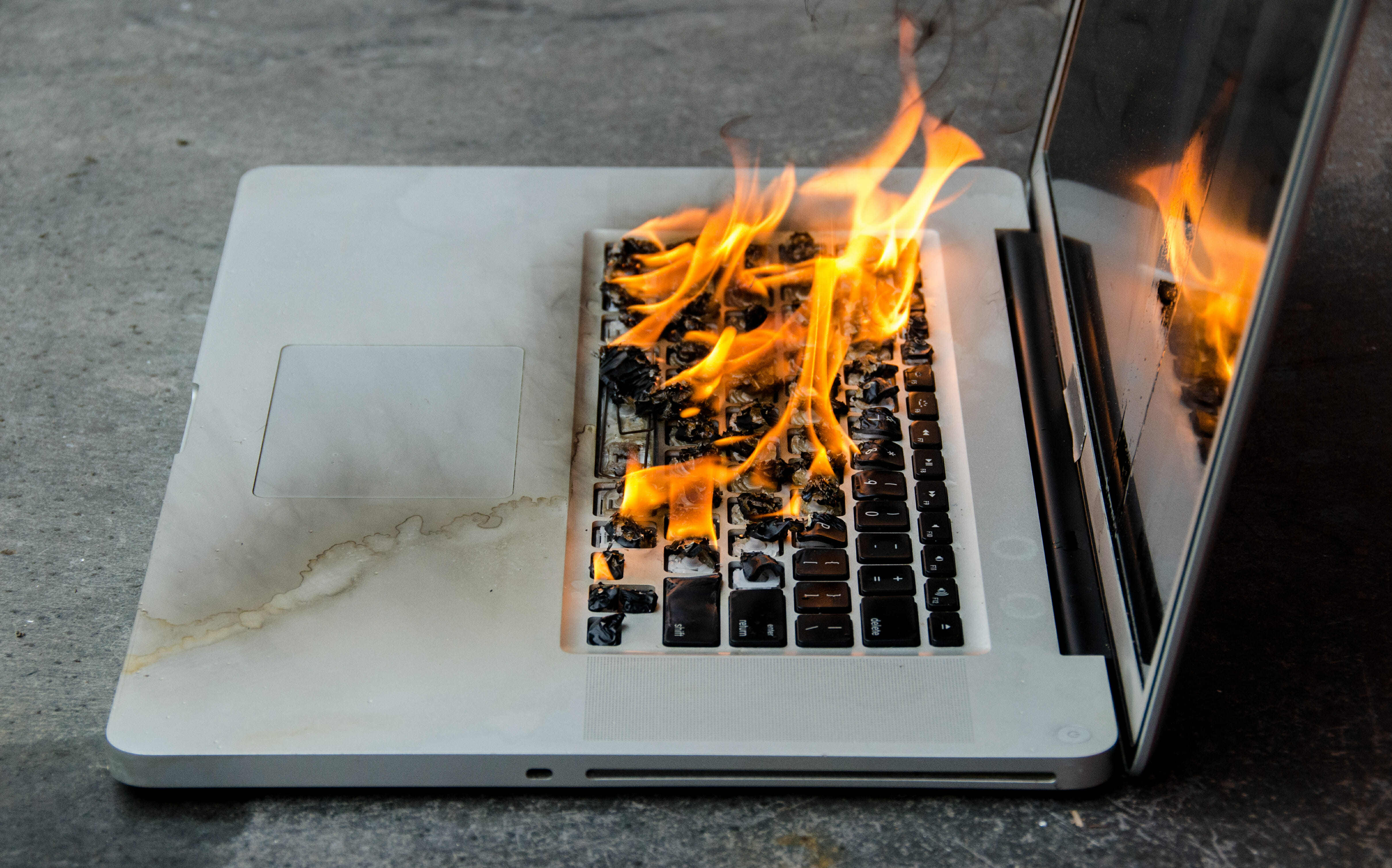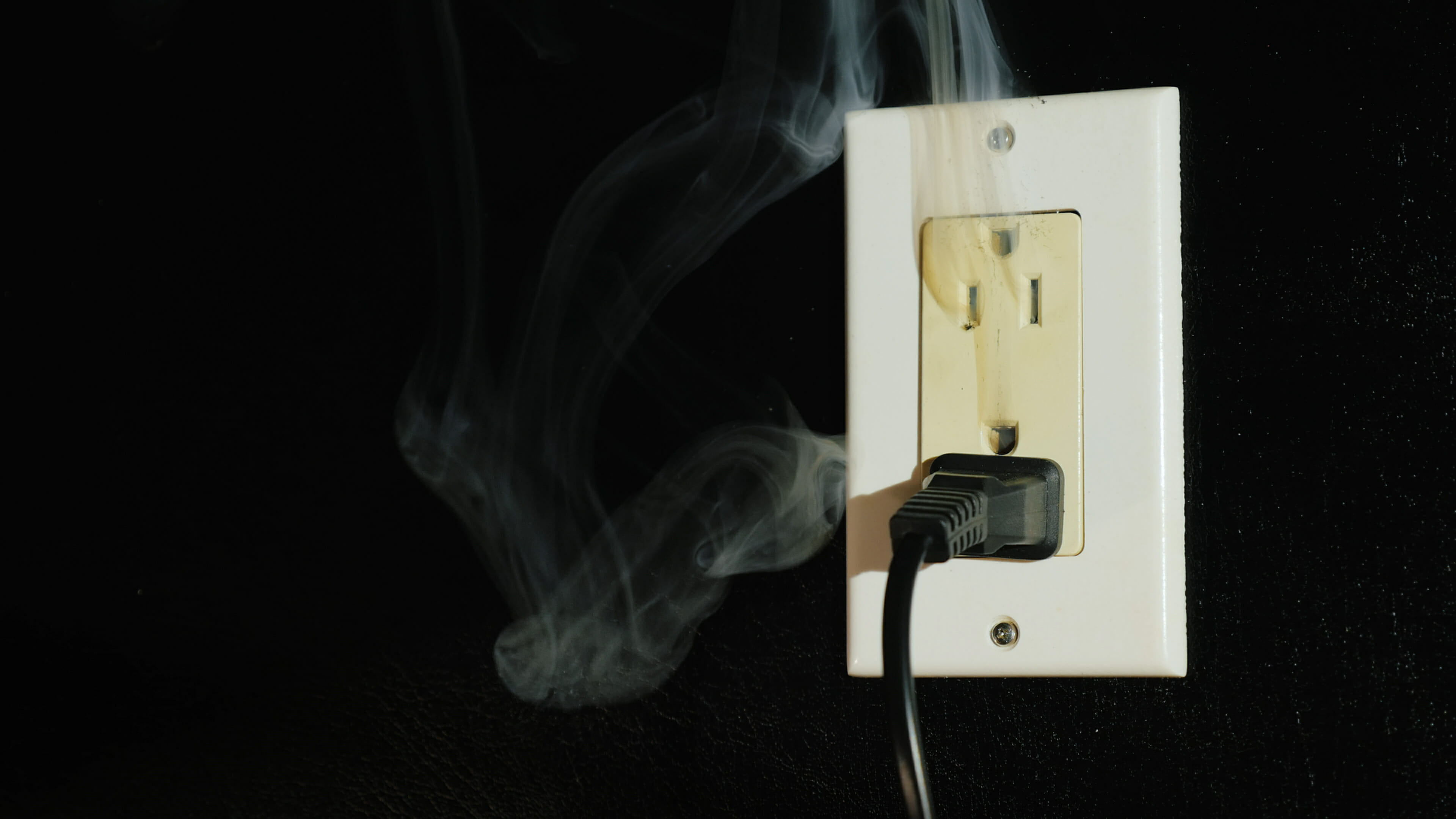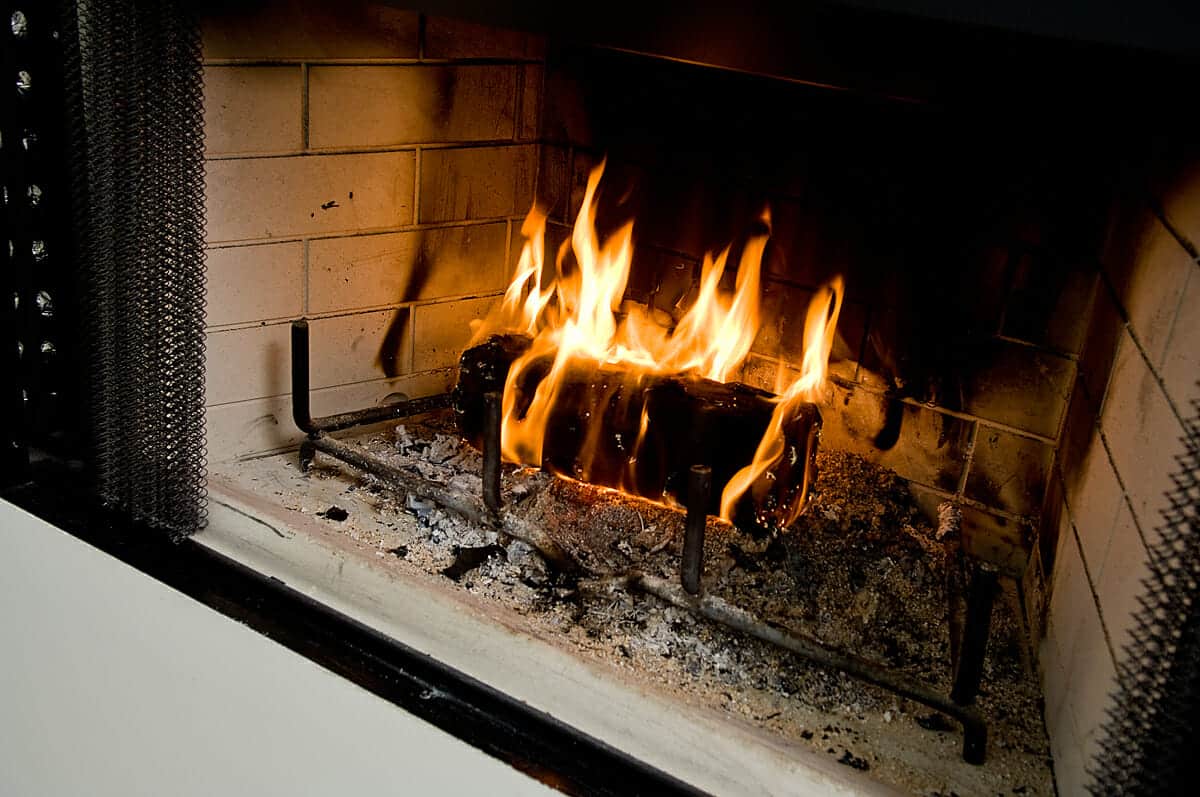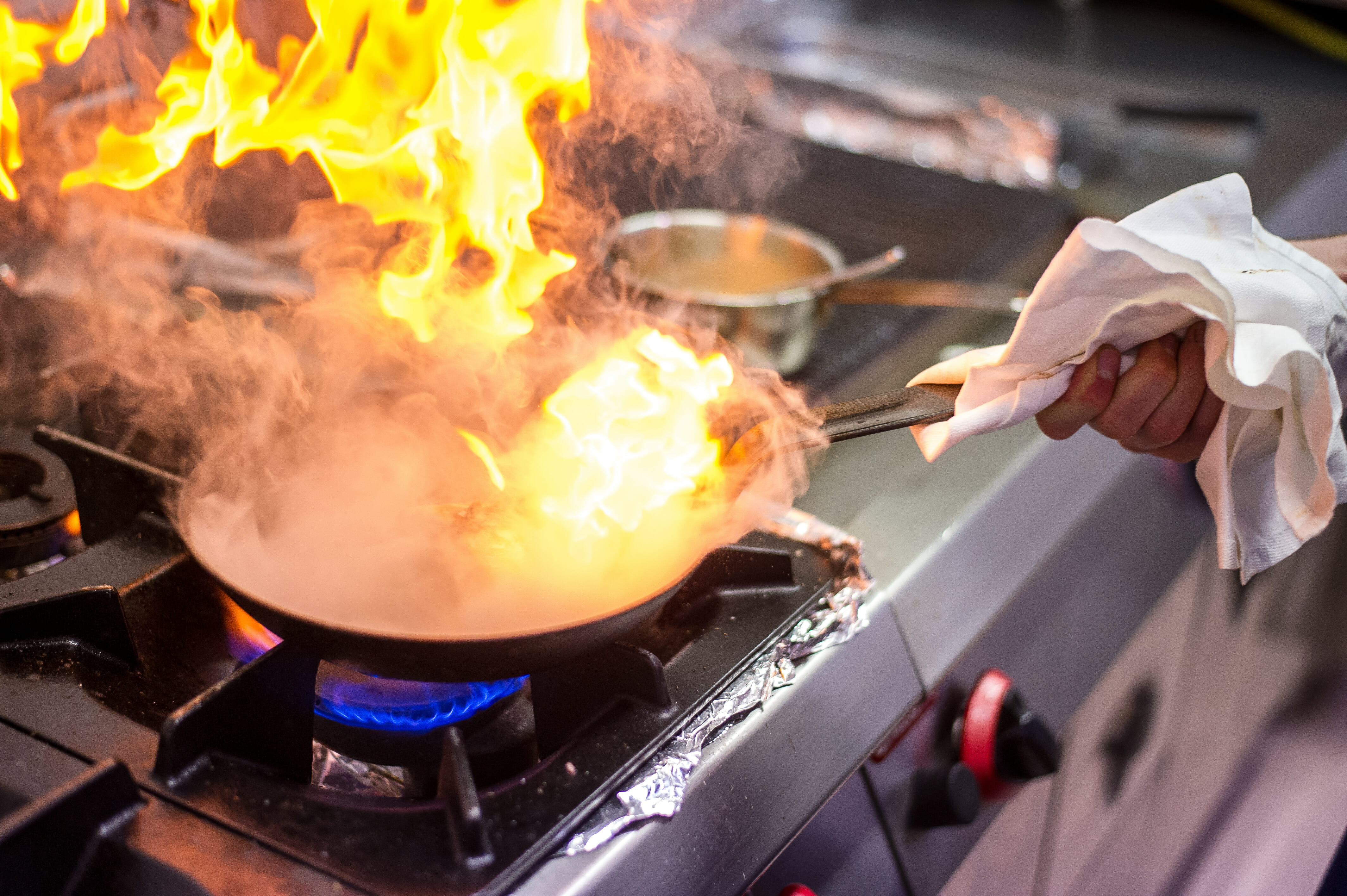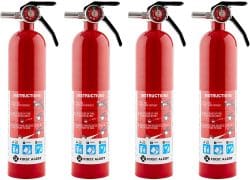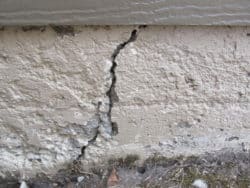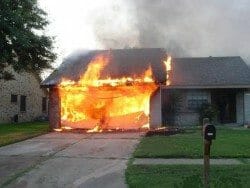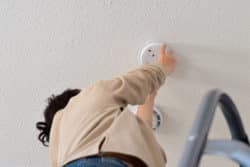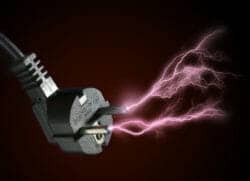How Much Time Do You Have To Escape a House Fire? It’s Much Less Than You Think.
Home » Interior » Alarms: Smoke & CO »
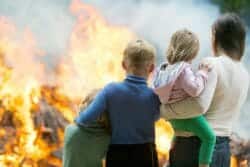
The amount of time you have to escape a house fire has greatly decreased in the past few decades:
- 30 years ago you had about 15 to 17 minutes to escape a house fire.
- Today, you have about 3 to 5 minutes to escape a house fire.
The reason the time to escape a home fire has decreased so much relates to changes in furniture manufacturing and our home design taste. The types of furniture and other contents in today’s homes, includes more plastics and petroleum-based products. Current trends in home design (open floor plans, larger rooms, and higher ceilings) have changed the chemical composition of the fire and greatly increased the speed at which it grows.
Most homeowners have a false sense of security
With most homes now having smoke alarms and carbon monoxide detectors, homeowners have been lulled into a false sense of security.
Safety surveys by the National Fire Protection Association (NFPA) have found that the majority of American homeowners feel that they are most secure from a fire when they are in their own home. However, approximately 80% of all fires occur in private residences, not at work or other places, so home fires actually present the greatest threat to their life via fire. We seem to forget, and many don’t realize, that home fires annually cause approximately:
- 2,510 or (93%) of all civilian structure fire deaths,
- 12,300 or (87%) of all civilian structure fire injuries, and
- $6.7 billion or (68%) of total direct damage in structure fires.
Fires kill more people each year than all other natural disasters combined, including floods, hurricanes, tornadoes and earthquakes.
What government agencies such as FEMA want you to know
Fire is FAST. In less than 30 seconds a small flame can turn into a major fire. It only takes minutes for thick black smoke to fill a house or for the home to be engulfed in flames.
Fire is HOT. The heat is more threatening than the flames. Room temperatures in a fire can be 100 degrees at floor level and rise to 600 degrees at eye level. Inhaling this super hot air will scorch your lungs and melt clothes to your skin.
Fire is DARK. Fire starts bright, but quickly produces black smoke and complete darkness.
Fire is DEADLY. Believe it or not, smoke and toxic gases kill more people than flames do. Fire produces poisonous gases that make you disoriented and drowsy. Asphyxiation is the leading cause of fire deaths, exceeding burns by a three-to-one ratio.
Why has the time to escape a home fire dropped to just a few minutes?
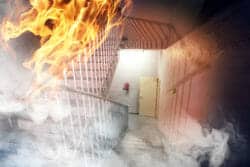
The changes in a home’s content, types of materials and design helps to explain why modern home fires may burn up to 8 times faster and can produce upwards of 200% more smoke than house fires did 30 years ago.
Builders now use a lot of products with petroleum bases such as plastics and synthetics. Even the wood trim in homes these days is not real wood but is often MDF (medium-density fiberboard) containing glues and hazardous substances like urea-formaldehyde. Furniture, cabinets and flooring often have plastic or paper laminates over a modified or composition wood base as well as flammable glues holding everything together.
The contents of homes today burn faster and hotter
Fires in today’s homes which contain modern products produce not only more heat, but also generate more smoke. This deadly smoke is filled with poisonous gases containing carbon monoxide (CO), carbon dioxide, hydrogen sulfide, unburned hydrocarbons and cyanide. Kids have more plastic toys, the kitchen has more plastic containers rather than glass as well as appliances, such as plastic coffee makers and microwaves with a plastic body. Bedding, pillows and sofas usually contain petroleum-based products and chemical synthetics which burn much faster than the materials and products used in homes previously.
All of these factors lead to more destructive home fires. Interestingly, fires that start on or in upholstered furniture only account for 1 to 3 percent of home fires but cause 15 to 20 percent of fire deaths.
The modern products used in homes today produce not only more heat, but also produce more smoke and poisonous gases such as carbon monoxide and cyanide; these products supply the fuel required for everything in a room to spontaneously burst into flames.
The design and construction materials used in today’s homes also cause them to burn faster and hotter than homes 30 years ago

Fire experts claim that two most important factors that help determine how deadly or destructive a fire will be involve containment and oxygen.
Containment deals with compartmentalizing the fire or containing it to a small area. If a fire occurs in a small area (compartment) like just one room and it doesn’t get to spread or build-up to a large fire, then there is less chance for damage and death.
Open floor plans and higher ceilings
Older homes tend to have smaller rooms and these rooms often have doors. Builders now build houses with more open space because modern day families want this. Open floor plans with kitchens being open to family rooms, often no dining rooms, and large rooms are more in demand. Ceiling heights are often 9, 10 or 12 feet high. Although these open floor plans and higher ceilings are visually appealing, they also allow the fire and the accompanying poisonous gases to spread faster and more easily.
Larger homes = more fuel
Homes today are larger than older homes. The larger the home, the more fuel (furniture, clothes, wood studs, etc.) for a fire to consume.
More two-story homes
Land cost for building a home is very expensive today, so builders build more two-story homes than they did years ago. With a two-story home, you need less land and there is less curb and gutter footage that a builder has to pay for.
These modern trends create fewer compartments (areas to contain a fire in) and greater spaces which allow a fire to grow rapidly and provide more oxygen for combustion.
Understanding the 4 stages of a home fire can save your life
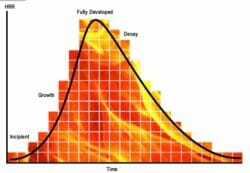
Stage 1 – “The First Minute” called the Ignition or Incipient Stage
In the first stage, a fire begins when there is the proper combination of heat, oxygen, and a fuel source (like wood, petroleum-based products, paper, bedding or furniture etc).
During this beginning stage the fire may be very small for the first 10 to 20 seconds but if it’s a cooking type grease fire or a sofa that has started burning, then within 30 seconds to a minute the fire starts to generate smoke floating along the ceiling and the upper air. The room starts heating up rapidly in the ceiling and upper wall areas. Toxic gases begin developing from burning cabinets, plastics or, if a fire is in the living room, then the vinyl-covered sofas, wood, upholstered chairs, and foam-filled pillows may burst into flames.
What starts the fire? The answer is that hundreds of things can start a house fire. Some of the most common reasons include:
- Cooking in the kitchen
- Laptops overheating while sitting on a bed or sofa, or their batteries may create a fire
- Electric arcing at an outlet may catch the wood studs or a nearby sofa on fire
- Lint buildup in the dryer vent
- Fireplace sparks jumping out onto the floor from cracked panels or a missing screen
Stage 2 – “Minutes 2 and 3” The Growth Stage
In stage 2, a home’s construction materials and content contribute to the rapid growth of smoke, flames and gases. Curtains, fabrics, bedding and furniture begin erupting into flames and the fire spreads more rapidly.
The fire in this stage begins to spread in basically two ways:
- Flames spread by direct contact – the flame is directly touching the next item to burn.
- Autoignition – where an item or object spontaneously bursts into flames when the temperature gets too hot: a wall, a piece of furniture or other items just burst into flames without having any flames touching them.
The temperatures during the growth stage may have started at 150 or 200 degrees and then quickly rise to 400 or 500 hundred degrees. This is enough that a couple of breaths of the hot poisonous air can cause you to pass out, burn your lungs or kill you.
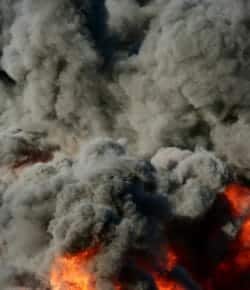
In this stage, the smoke layer gets lower and lower and when it reaches the top area of doorways it begins to draft into other rooms and hallways. If the home is two stories and the fire started on the first floor it will then begin to progress up the stairway to the second floor, carrying hot heated air and deadly gases. The smoke level may fill entire rooms or reach down to just a couple of feet from the floor very quickly.
Firefighters always stress the importance of staying low and getting out as quickly as you can. During this stage, the temperature may work its way up to 900 degrees or higher, and rooms become rapidly engulfed with smoke and fire. These hot temperatures easily exceed what is needed to ignite common materials (paper catches fire at 450°F, leather 400° F, wood 580° F, plastic and polypropylene products at 580° to 840° F).
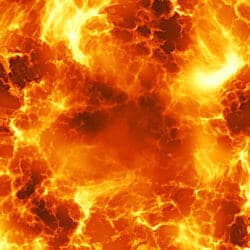
Dangerous “Flashovers” may occur
It is during the “Growth” stage that dangerous and deadly flashovers may occur. A flashover is when the contents of a room suddenly and simultaneously ignite from floor to ceiling. There is little warning that a flashover is about to happen and there is nothing in a home that is worth staying an extra minute. Many fire departments recommend that you call the fire department immediately on discovering a fire, even though your first instinct is to fight the fire and try to put it out.
Flashovers can be extremely deadly and result in serious injuries or deaths to anyone caught in a room when a flashover occurs.
Stage 3 – “Minute 4” The Peak Stage
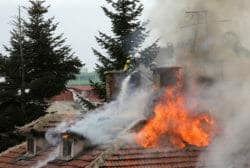
In the fully developed stage, the temperatures have generally reached as high as they are going to go. The average temperature of a home fire is about 1,100 degrees Fahrenheit but can reach as high as 1,700 degrees (plus or minus), depending on the fuel feeding the fire and how long the fire burns. During this hottest stage of the fire, flames may be noticeable to people nearby through the roof, windows or doors.
During this stage, the fire may have penetrated the walls, the studs may be on fire, wood and composite doors are burning, ceiling and floor joist or trusses are burning, attic rafters may be ablaze and some portions of the building may collapse. Also, gas lines may be ruptured, steel hardware may lose 30, 40 or even 50% of it’s strength, and concrete slabs may become damaged due to the extreme heat and incur even more damage when cold water from the fire department is sprayed on it.
For anyone trapped inside the home, this is one of the most dangerous times.
Stage 4 – “Minutes 4 to 5” The Decay Stage
The decay stage is generally the longest stage of the fire and usually occurs when there is a significant decrease in available oxygen and/or a decrease in fuel (combustible materials). However, this can change rapidly if there is a backdraft of oxygen or additional fuel becomes available. Absent those incidences of reignition, it’s a little like the fire is burning itself out in this stage.
Note: Every fire is different; a home’s contents will vary, the construction materials will differ, the ventilation will differ and the geometric design will differ; thus the rate at which a fire spreads and the severity will vary.
Steps to protect yourself and your family
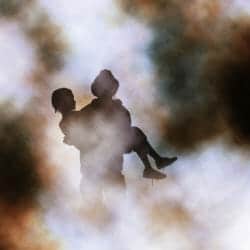
Smoke alarms
Roughly 2/3 of home fire deaths happen in homes with no smoke alarm or the smoking alarm wasn’t working; therefore, it is critical to regularly test the smoke detectors and carbon monoxide detectors.
Remember:
- Know where to place smoke alarms
- Learn 11 places you should not put smoke alarms
- Replace any smoke alarms that are over 8 years old, damaged or have been painted over.
Keep doors closed
To decrease the speed of the fire and the dangers associated with the fire such as the heat and poisonous gases it is best to have doors closed. It is especially recommended to sleep with your bedroom door closed. According to Close Before You Doze, having a door closed during a fire can mean a 900 degree difference between the room on fire and a room with a closed door. Having a closed door during a fire also helps by keeping the carbon monoxide levels around 1,000PPM versus 10,000PPM.
Have a fire escape plan
Part of saving yourself and your family includes having a fire escape plan that all family members know, and understand why it is important. Just as you’ve had fire drills in school or sometimes at work, it is wise to have them at home about twice a year.
Remember: Crawl low under any toxic smoke when escaping. Heavy smoke and poisonous gases collect first along the ceiling and get lower and lower as the fire builds. Reinforcing how hot the smoke-filled air may be and that after a few gulps you can damage your lungs, pass out or even die.

Do a “Blindfold Test”
If you really want to train for a major house fire, do a blindfold test, both you and the family members, including the kids. In fact, the kids will probably love it.
Pick a bedroom or a room that you feel that you could get trapped in. Picture in your mind that the room is very hot and filled with heavy dark smoke, that you can’t even see where the door is. Think that you must get out safely and what path you will escape by.
Now put on a blindfold and lower yourself to the floor. Crawl along the floor blindfolded, imagining your path in your mind, the barriers and obstacles that you will encounter and how you will navigate around them.
After you have done this exercise evaluate what you might do differently and if you feel that there is room for improvement, do it again.
Walk around your home and conduct a fire safety check
Walk around both the interior and exterior of your home looking for fire hazards and correct any that you come across.
Check the exterior doors and make sure that there is not a deadbolt that requires a key on the inside to open. If so, replace the deadbolt with the type that you just need to turn a knob to open it; only the exterior side should require a key to open.
Make sure to also check your garage door. The door between the garage and home is required to be a fire rated door as many fires start in the garage. However, these doors are often replaced by homeowners without realizing that it should be a fire rated door, or these doors often have a pet/doggy door cut into them, which negates the fire rating of the door.
Bottom Line

Although every fire is different, you have much less time to escape than you did 30 or 50 years ago. House fires today burn so much faster than they used to because of the contents, types of building materials, and that we have more open floor plans and higher ceilings.
You have much less time than you think – being prepared may save your home, your life, or the lives of loved ones.
